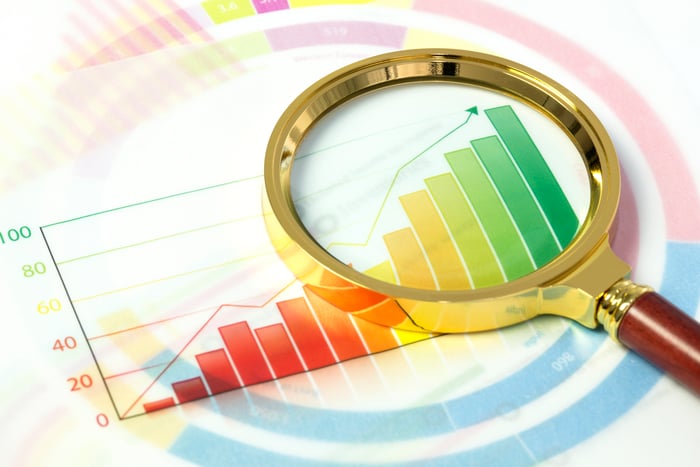Geoffrey Kendrick from Standard Chartered projects that XRP ( XRP 1.25%) could climb to $12.50 by 2028, representing a 325% increase from its present value of $2.95. This would translate to an annualized return of 62% over the next three years, which is a notable decrease from the 87% yearly return seen in the previous three years.
At the same time, Michael Miller at Morningstar forecasts that the total cryptocurrency market will reach $8.5 trillion by 2034. This suggests a moderate annual growth rate of 8.4% over the next nine years, a significant slowdown compared to the 60% yearly growth experienced in the past three years.
Combining these perspectives—XRP may outperform the wider market, but overall growth is expected to slow—I believe XRP could double to $5.90 within the next three years, implying an annual return of 26% during that span. Here’s why this target appears reasonable.

Image source: Getty Images.
U.S. regulators are showing increased support for the crypto sector
Under former Chairman Gary Gensler, the Securities and Exchange Commission (SEC) was often viewed as unfriendly toward the crypto industry. The agency relied heavily on enforcement actions while steering clear of establishing new regulations, a tactic that critics say led to uncertainty and hampered innovation.
However, the SEC’s stance has shifted under President Trump, who pledged during his last campaign to turn the U.S. into the “crypto capital of the world.” After returning to office, he promptly issued an executive order to bolster U.S. leadership in digital assets and appointed crypto supporter Paul Atkins as the new SEC chair.
A key development was the SEC’s decision to revoke Staff Accounting Bulletin (SAB) 121, a guideline that discouraged banks from providing crypto custody services. SAB 121 likely slowed institutional adoption of digital assets, and many analysts, Kendrick included, believe its removal will significantly benefit the crypto industry.
Ripple leverages XRP for efficient and low-cost global payments
Ripple, a fintech firm, is another major driver for XRP. The company offers payment solutions to businesses and financial institutions, including a service called on-demand liquidity (formerly xRapid), which uses XRP as a bridge asset for international money transfers. This method is both quicker and less expensive than traditional wire transfers using the SWIFT system.
Despite Ripple’s large client base, only a small fraction utilize XRP, and I remain skeptical that this will change. Using a highly volatile cryptocurrency for payments is less practical when stablecoins are available. To address this, Ripple introduced its own stablecoin, Ripple USD (RLUSD), in December 2024.
In theory, RLUSD could boost demand for XRP since transaction fees for payments made with the stablecoin are still paid in XRP. However, RLUSD has yet to make a significant impact, as it faces stiff competition from established stablecoins like USDC. In fact, monthly transaction volumes for XRP have declined throughout 2025.
The SEC is likely to approve spot XRP ETFs in October
Arguably the biggest catalyst for XRP is the anticipated approval of several spot XRP exchange-traded funds (ETFs). The SEC is expected to rule on six of these products between Oct. 18 and Oct. 25, with a seventh decision due on Nov. 14. Most analysts expect a positive outcome for XRP.
Spot XRP ETFs could attract both retail and institutional investors who have previously avoided the asset due to the complexities and high costs of trading on crypto exchanges. For example, Bitcoin surged 165% after spot Bitcoin ETFs were approved in January 2024, so it’s reasonable to expect that XRP could see similar gains if a spot ETF is approved.
To sum up, investors should be aware that cryptocurrencies carry significant risk. XRP’s price dropped by more than 20% from its all-time high on two occasions in the past year, with one drop reaching 45%. Those who are uncomfortable with such volatility should steer clear of XRP.
